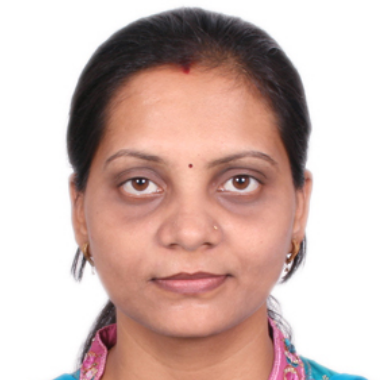International Journal of Information Technology and Computer Science (IJITCS)
IJITCS Vol. 5, No. 4, 8 Mar. 2013
Cover page and Table of Contents: PDF (size: 800KB)
Author(s)
Index Terms
Optical Switch, Fiber Delay Lines, TWCs
Abstract
This paper discusses an optical packet switch (OPS) architecture, which utilizes the components like optical reflectors, tunable wavelength converters (TWCs), arrayed waveguide grating (AWG) and pieces of fiber to realize the switching action. This architecture uses routing pattern of AWG, and its symmetric nature, to simplify switch operation significantly. It is also shown that using multi-wavelengths optical reflector, length of delay lines can be reduced to half of its original value. This reduction in length is useful for comparatively larger size packets as for them. It can grow up some kilometers. The considered architecture is compared with already published architecture. Finally, modifications in the architecture are suggested such that switch can be efficiently placed in the backbone network.
Cite This Paper
Pallavi S, M. Lakshmi, "AWG Based Optical Packet Switch Architecture", International Journal of Information Technology and Computer Science(IJITCS), vol.5, no.4, pp.30-39, 2013. DOI:10.5815/ijitcs.2013.04.04
Reference
[1]R. S. Tucker and W. D. Zhong., ”Photonic packet switching: an overview,” IEICE Trans. Commun., vol. E82 B, no.2, pp. 254-264, Feb. 1999.
[2]R. K. Singh, R. Srivastava and Y. N. Singh, ”Wavelength division multiplexed loop buffer memory based optical packet switch,” Optical and Quantum Electronics, vol. 39, no. 1, pp. 15-34, Jan. 2007.
[3]A. Pattavina, ”Multi-wavelength switching in IP optical nodes adopting different buffering strategies,” Optical Switching and Networking, vol. 1, no. 1, pp. 65-75, Jan. 2005.
[4]D. K. Hunter, M. H. M. Nizam, M. C. Chia, I. Andonovic, K. M. Guild, A. Tzanakaki, M. J. O’Mahony, L. D. Bainbridge, M. F. C. Stephens, R. V. Penty and I. H. White, ”WASPNET: A wavelength switched packet network,” IEEE Commun. Magazine, vol. 37, no. 3, pp. 120-129, Mar. 1999.
[5]M. C. Chia, D. K. Hunter, I. Andonovic, P. Ball, I. Wright, S. P. Ferguson,K. M. guild and M. J. O’Mahony, ”Packet loss and delay performance of feedback and feed-forward arrayed-waveguide gratings-based optical packet switch with WDM inputs-outputs,” J. Lightw.Technol., vol. 19, no. 9, pp. 1241 -1254, Sep. 2001.
[6]R. Srivastava, R. K. Singh and Y. N. Singh, “Design Analysis of Optical Loop Memory,” J. Lightw. Technol. vol.27, no. 21, pp.4821-4831, Nov.2009.
[7]W. D. Zhong and R. S. Tucker, “A wavelength routing based photonic packet buffer and its application in photonic packet switching systems,” J. Lightw. Technol., Vol. 16, No. 8, pp. 1737-1745, Oct. 1998.
[8]K. Sasayama, et.al., “FRONTIERNET: Frequency routing type time division interconnection network,” J. Lightw. Technol., Vol. 15, No. 10, pp. 417-429, Mar. 1997.
[9]Y. Shmimazu and M. Tsukada,“Ultrafast photonic ATM switch with optical output buffers,” J. Lightw. Technol., Vol. 10, pp. 265-272, Feb. 1992.
[10]G. Bendelli, et.al., “Photonic ATM switch based on multi-wavelength fiber loop buffer,” OFC’95, Vol.8, pp.141-142, Feb.1995.
[11]R. Srivastava, R. K. Singh and Y. N. Singh, “Optical loop memory for photonic switching application,” OSA J. of Optical Networking, vol. 6 pp. 341-348, Apr 2007.
[12]N. Verma, R. Srivastava and Y. N. Singh, “ Novel design modification proposal for all optical fiber loop buffer switch,” in 2002 Proc. Photonics Conf., p. 181.
[13]Y. N. Singh, A. Kushwaha and S. K. Bose, “Exact and approximate modeling of an FLBM-based all optical packet switch,” IEEE J. of Lightw. Technol., vol. 21, pp. 719-726, Mar. 2003.
[14]F.S.Choa, et.al., “An optical packet switch based on WDM technologies,” IEEE J. of Lightw. Technol., vol. 23, pp. 994-1013, Mar. 2005.
[15]H. Nakazima, “Photonic ATM switch based on a multi wavelength fiber loop buffer,” CSELT tech. Rep. Vol. 23, pp. 331-335, 1995.
[16]R. Srivastava, R. K. Singh and Y. N. Singh, “Regenerator based optical loop memory,” In Proceedings IEEE TENCON Region 10 Conference, Taiwan, ROC, 2007, paper no.WeOE-O2.3.
[17]R. Takabashi, et.al., “Photonic random access memory for 40- Gbps 16-b burst optical packets,” IEEE Photon Technol. Lett. Vol.16, No. 4, pp. 1185-1187, Apr. 2004.
[18]C. M. Gauger, et.al, “Optimized combination of converter pools and FDL buffers for contention resolutions in optical burst switching,” Photonic Netw. Commun. Vol. 9, No. 2, pp. 139-148, Sep. 2004.
[19]C. Guillernot et.al., “Transparent optical packet switching: the European ACTS KEOPS project approach,” J. Lightw. Technol. Vol. 16, No. 12, pp. 2117-2134, Dec.1998.
[20]R. Srivastava, R. K. Singh and Y. N. Singh, ”All optical reflectors based WDM Optical Packet Switch,” Indian Patent office, patent application no. 2707/DEL/2007 (patent filed).
[21]Q. Wu, P. L. Chu and H. P. Chan, ” General design approach to multichannel fiber Bragg grating,” J. Lightw. Technol., vol. 24, no.3, pp. 1571- 1580, Mar. 2006.
[22]M. J. Karol, M. G. Hluchyj, and S. P. Morgan, “Input versus output queuing on a space-division packet switch,” IEEE Trans of commun., 35, 1347-1356 (1987).
[23]M. G. Hluchyj, and M. J. Karol, “Queuing in high performance packet switching,” IEEE J. sel. areas commun. 6. 1587-1597 (1988).
[24]R. V. Caenegem, ”From IP over WDM to all-optical packet switching: economical view,” J. Lightw. Technol., vol. 24, no. 4, pp. 1638-1645, Apr. 2006.
[25]V. Eramo, M. Listanti and A. Germoni, ”Cost evaluation of optical packet switches equipped with limited-range andfull-range converters for contention resolution,” J. Lightw. Technol., vol. 26, no. 4, pp. 390-407, Feb. 2008.

